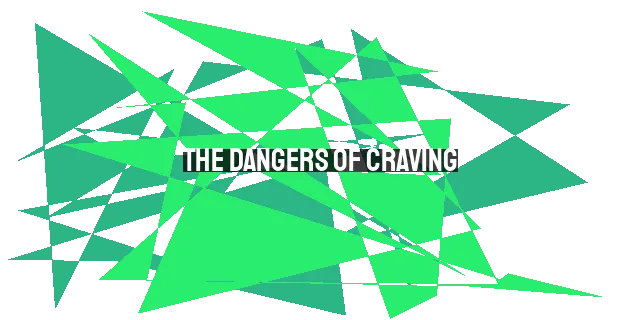Christian Hub
1 year ago
The Cry of Forsakenness: Understanding Jesus' Anguish on the Cross
At the ninth hour, Jesus cried out in a loud voice, “Eloi, Eloi, lama sabachthani?” These words, spoken by Jesus on the cross, can be found in Mark 15:34. In this moment, we witness the depths of Jesus' anguish and the weight of his sacrifice.
The crucifixion of Jesus has been described in great detail up until this point. We have heard of the flogging, the crown of thorns, and the excruciating pain of being nailed to the cross. But now, after hours of suffering in silence, Jesus cries out from the depths of his soul. His words are a quote from Psalm 22, spoken in Aramaic, and they reveal the anguish he is experiencing in his soul.
It is important to note that there are certain aspects of this forsakenness that we need to understand. Firstly, it does not mean that the eternal communion between the Father, the Son, and the Holy Spirit was broken. God, being triune, cannot cease to be in relationship with himself. Secondly, it does not mean that the Father ceased to love the Son. In fact, at this very moment, the Son is offering the greatest act of filial piety to the Father. Thirdly, it does not mean that the Holy Spirit had abandoned the Son. The Spirit had come down upon Jesus at his baptism and remained with him until the end. And finally, this cry is not a cry of despair. Jesus, even in his darkest hour, still has the assurance that God is holding him. He may not see or feel it in that moment, but deep within his soul, he knows that God is there.
However, amidst these qualifiers, we must acknowledge that Jesus was truly forsaken. He was not just feeling forsaken, but he was forsaken by God himself. It was the Father who had delivered him up to be crucified, and in this moment, it seems that God has closed his ears to Jesus' cry. The jeering crowd, the taunting demons, and the excruciating pain all point to the anger of God. There is no countering voice, no sign from heaven to remind Jesus that he is God's beloved Son. He stands alone, bearing the weight of the sin of the world.
In this moment, Jesus is not just bearing a vague relation to sinners. He is one of them, numbered with transgressors. He is sin itself, condemned to bear its curse. And there is no cover for him, no advocate to serve on his behalf. He must bear all the weight of sin, and God cannot spare him until the ransom is paid in full.
As we try to grasp the depths of Jesus' suffering, we can only catch a glimpse of the torment in his soul. This cry of forsakenness expresses the intense anguish of the tension between the sin-bearing Son and his heavenly Father. Jesus is caught in the whirlwind of sin at its most dreadful, God forsaken by God.
But there is another question that arises from Jesus' cry: "Why?" Why is he experiencing this forsakenness? Is it a cry of protest against unjust suffering? Jesus is indeed innocent, but he has always known that he is the sin-bearer and that he must die to redeem the many. Has he forgotten this purpose in this moment of anguish?
Or is it a cry of incomprehension, as if Jesus doesn't understand why he is in this situation? Has he momentarily forgotten the eternal covenant and the plan of redemption? It is possible that the pain, the divine anger, and the fear of eternal perdition have occupied his thoughts, leaving no room for the full understanding of his mission.
Alternatively, could it be a cry of amazement? Is Jesus confronted with a dreadfulness that he could never have anticipated? He knew from the beginning that he would die a violent death, and in the garden of Gethsemane, he faced the prospect with trepidation. But now, as he tastes the bitterness of death, the reality is infinitely worse than he could have imagined.
Never before has anything come between Jesus and his Father. But now, the sin of the whole world has come between them, and Jesus is caught in the vortex of the curse. It is not that God is absent, but that he is present as the Judge of all the earth who cannot condone sin. Even his own Son cannot be spared from the consequences of sin.
As Jesus reaches the limits of his endurance, we, as observers in history, know the outcome. We know that the sacrifice is complete, the curtain is torn, and the way into the Holiest is opened for all. Jesus' joy finds expression in the words of Psalm 31:5, as he commits his spirit into the hands of his Father.
We may never fully comprehend what transpired between Jesus' cry of forsakenness and his final surrender. But we do know that the cup of suffering was fully drained, and the curse was exhausted. The Father proudly holds out his hands to receive the spirit of his beloved Son.
In conclusion, the cry of forsakenness from the cross reveals the depths of Jesus' anguish and the weight of his sacrifice. It is a cry that expresses the tension between the sin-bearing Son and his heavenly Father. Jesus was truly forsaken by God, bearing the weight of the sin of the world. But in his darkest hour, he held on to the assurance that God was holding him. And in the end, Jesus' sacrifice was complete, and the way to God was opened for all who believe.
The crucifixion of Jesus has been described in great detail up until this point. We have heard of the flogging, the crown of thorns, and the excruciating pain of being nailed to the cross. But now, after hours of suffering in silence, Jesus cries out from the depths of his soul. His words are a quote from Psalm 22, spoken in Aramaic, and they reveal the anguish he is experiencing in his soul.
It is important to note that there are certain aspects of this forsakenness that we need to understand. Firstly, it does not mean that the eternal communion between the Father, the Son, and the Holy Spirit was broken. God, being triune, cannot cease to be in relationship with himself. Secondly, it does not mean that the Father ceased to love the Son. In fact, at this very moment, the Son is offering the greatest act of filial piety to the Father. Thirdly, it does not mean that the Holy Spirit had abandoned the Son. The Spirit had come down upon Jesus at his baptism and remained with him until the end. And finally, this cry is not a cry of despair. Jesus, even in his darkest hour, still has the assurance that God is holding him. He may not see or feel it in that moment, but deep within his soul, he knows that God is there.
However, amidst these qualifiers, we must acknowledge that Jesus was truly forsaken. He was not just feeling forsaken, but he was forsaken by God himself. It was the Father who had delivered him up to be crucified, and in this moment, it seems that God has closed his ears to Jesus' cry. The jeering crowd, the taunting demons, and the excruciating pain all point to the anger of God. There is no countering voice, no sign from heaven to remind Jesus that he is God's beloved Son. He stands alone, bearing the weight of the sin of the world.
In this moment, Jesus is not just bearing a vague relation to sinners. He is one of them, numbered with transgressors. He is sin itself, condemned to bear its curse. And there is no cover for him, no advocate to serve on his behalf. He must bear all the weight of sin, and God cannot spare him until the ransom is paid in full.
As we try to grasp the depths of Jesus' suffering, we can only catch a glimpse of the torment in his soul. This cry of forsakenness expresses the intense anguish of the tension between the sin-bearing Son and his heavenly Father. Jesus is caught in the whirlwind of sin at its most dreadful, God forsaken by God.
But there is another question that arises from Jesus' cry: "Why?" Why is he experiencing this forsakenness? Is it a cry of protest against unjust suffering? Jesus is indeed innocent, but he has always known that he is the sin-bearer and that he must die to redeem the many. Has he forgotten this purpose in this moment of anguish?
Or is it a cry of incomprehension, as if Jesus doesn't understand why he is in this situation? Has he momentarily forgotten the eternal covenant and the plan of redemption? It is possible that the pain, the divine anger, and the fear of eternal perdition have occupied his thoughts, leaving no room for the full understanding of his mission.
Alternatively, could it be a cry of amazement? Is Jesus confronted with a dreadfulness that he could never have anticipated? He knew from the beginning that he would die a violent death, and in the garden of Gethsemane, he faced the prospect with trepidation. But now, as he tastes the bitterness of death, the reality is infinitely worse than he could have imagined.
Never before has anything come between Jesus and his Father. But now, the sin of the whole world has come between them, and Jesus is caught in the vortex of the curse. It is not that God is absent, but that he is present as the Judge of all the earth who cannot condone sin. Even his own Son cannot be spared from the consequences of sin.
As Jesus reaches the limits of his endurance, we, as observers in history, know the outcome. We know that the sacrifice is complete, the curtain is torn, and the way into the Holiest is opened for all. Jesus' joy finds expression in the words of Psalm 31:5, as he commits his spirit into the hands of his Father.
We may never fully comprehend what transpired between Jesus' cry of forsakenness and his final surrender. But we do know that the cup of suffering was fully drained, and the curse was exhausted. The Father proudly holds out his hands to receive the spirit of his beloved Son.
In conclusion, the cry of forsakenness from the cross reveals the depths of Jesus' anguish and the weight of his sacrifice. It is a cry that expresses the tension between the sin-bearing Son and his heavenly Father. Jesus was truly forsaken by God, bearing the weight of the sin of the world. But in his darkest hour, he held on to the assurance that God was holding him. And in the end, Jesus' sacrifice was complete, and the way to God was opened for all who believe.



POST COMMENT
For post a new comment. You need to login first. Login
COMMENTS(0)
No Comment yet. Be the first :)